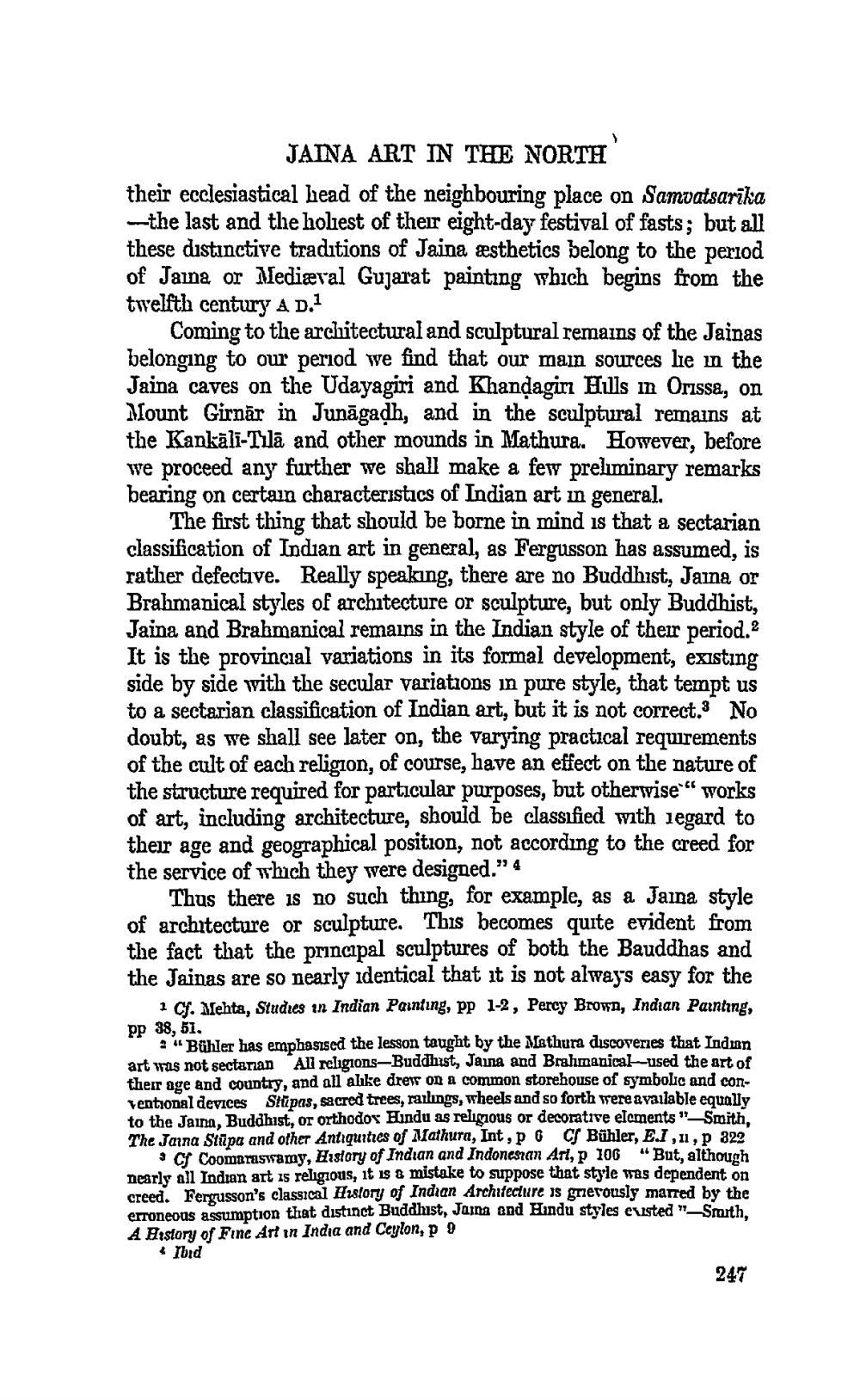________________ JAINA ART IN THE NORTH their ecclesiastical Lead of the neighbouring place on Samvatsarika -the last and the holiest of their eight-day festival of fasts; but all these distinctive traditions of Jaina aesthetics belong to the period of Jaina or Medieval Gujarat painting which begins from the twelfth century AD.1 Coming to the arclitectural and sculptural remains of the Jainas belonging to our period we find that our main sources lie in the Jaina caves on the Udayagiri and Khandagiri Hulls in Orissa, on Mount Girnar in Junagadh, and in the sculptural remains at the Kankali-Tula and other mounds in Mathura. However, before we proceed any further we shall make a few preliminary remarks bearing on certain characteristics of Indian art in general. The first thing that should be borne in mind is that a sectarian classification of Indian art in general, as Fergusson has assumed, is rather defective. Really speaking, there are no Buddhist, Jaina or Brahmanical styles of architecture or sculpture, but only Buddhist, Jaina and Brahmanical remains in the Indian style of their period.2 It is the provincial variations in its formal development, existing side by side with the secular Variations in pure style, that tempt us to a sectarian classification of Indian art, but it is not correct. No doubt, as we shall see later on, the varying practical requirements of the cult of each religion, of course, have an effect on the nature of the structure required for particular purposes, but otherwise works of art, including architecture, should be classified with regard to their age and geographical position, not according to the creed for the service of which they were designed." 4 Thus there is no such thing, for example, as a Jaina style of architecture or sculpture. This becomes quite evident from the fact that the principal sculptures of both the Bauddhas and the Jainas are so nearly identical that it is not always easy for the 1 Cf. Mehta, Studies in Indian Painting, pp 1-2, Percy Brown, Indian Painting, pp 88, 51. " Buhler has emphasised the lesson taught by the Mathura discoveries that Indmn art was not sectaran All religions-Buddhist, Jains and Brahmanical-used the art of their age and country, and all alike drew on a common storehouse of symbolic and conventional devices Stupas, sacred trees, railings, wheels and so forth were available equally to the Jaina, Buddhist, or orthodos Hindu as religious or decorative elements " Smith. The Janna Stupa and other Antiquities of Mathura, Int ,p C Bahler, E.I, 11. p 320 3 C Coomamaswamy, History of Indian and Indonesian Art, p 106 "But, although nearly all Indian art is religious, 1t 18 G mistake to suppose that style was dependent on creed. Fergusson's classical History of Indian Architecture is grietously marred by the erroneous assumption that distinct Buddhist, JAIRA and Hindu styles eusted " Smuth A History of Fine Art in India and Ceylon, po * Ibid 247




